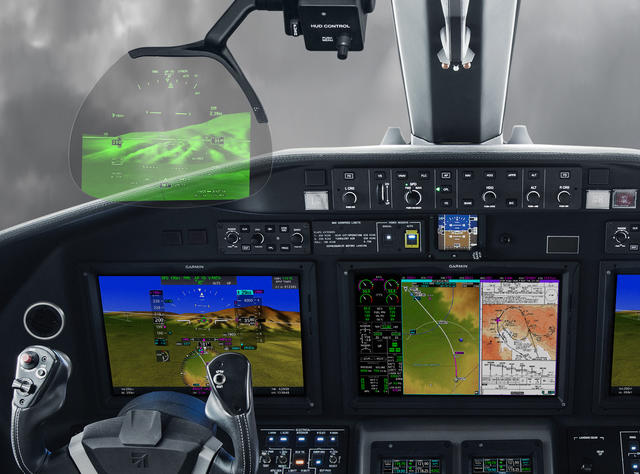Global Avionics Round-Up from Aircraft Value News (AVN)

Heads-Up Display (HUD) avionics are increasingly being adopted across different aircraft models to enhance operational efficiency and safety, particularly during challenging flight conditions.
Based on current and future orders, a specific HUD product that’s increasingly adopted by several commercial airlines is the Rockwell Collins Head-Up Guidance System (HGS). This HUD technology provides critical flight information, such as altitude, speed, and navigation data, directly in the pilot’s line of sight, enhancing situational awareness and safety.
Alaska Airlines has been a notable early adopter of this system, integrating the Rockwell Collins HUD into its fleet. The HGS has been implemented in aircraft models such as the Boeing 737 family, including the 737-800 and 737 MAX models.
Delta Air Lines and FedEx also use HUD systems, notably on aircraft like the Airbus A330 and Boeing 767 for improved low-visibility operations.
Originally developed for fighter jets and other military aircraft, HUDs project critical flight information directly into the pilot’s line of sight on the windshield, allowing pilots to keep their eyes focused on the outside environment while still accessing essential data such as altitude, airspeed, and navigation details.
In commercial aviation, HUD systems have become increasingly popular, especially for improving safety in low-visibility conditions such as fog or heavy rain. Major aircraft manufacturers, including Boeing and Airbus, have integrated HUD technology into their latest models from inception on the assembly line.
The adoption of HUDs in commercial aircraft is part of a larger trend where military-grade avionics innovations—such as Enhanced Vision Systems (EVS) and Synthetic Vision Systems (SVS)—are finding use in commercial cockpits. These systems significantly improve safety by providing pilots with real-time imagery and data in challenging environments.
HUD avionics systems, when integrated into an aircraft’s cockpit, enhance both the base values and lease rates of that aircraft model due to several factors related to operational efficiency, safety, and market demand:
Aircraft equipped with HUDs can operate in low-visibility conditions, such as fog or heavy rain, more safely. This capability allows airlines to minimize delays and cancellations, leading to better utilization of the aircraft, increased revenue potential, and higher operational reliability. This boost in operational efficiency translates into higher base values and lease rates for aircraft outfitted with HUD-enable avionics.
HUD systems reduce pilot workload and provide real-time data that enhances safety during critical flight phases, such as takeoff, landing, and approach. This makes the aircraft more attractive to airlines prioritizing safety, particularly in regions with stringent regulatory standards.
U.S. Federal Aviation Administration (FAA) regulations increasingly mandate advanced avionics for certain operational capabilities, such as Category III landings (a stringent type of precision instrument approach). Aircraft equipped with HUD systems are better positioned to meet these regulatory requirements, making them more desirable in the marketplace and, consequently, more valuable.
Airlines tend to prefer aircraft with cutting-edge avionics, because it improves operational reliability and reduces pilot training costs. Aircraft with integrated HUD systems often receive higher demand from premium airlines, as these carriers seek aircraft that provide advanced safety and operational features.
This article also appears in the October 21 issue of our partner publication Aircraft Value News.
John Persinos is the editor-in-chief of Aircraft Value News. You can reach John at: [email protected]